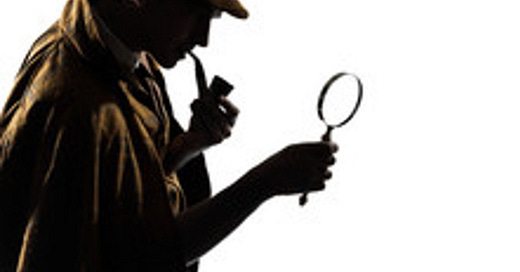Making New Sense of Evidence
Making New Sense of Evidence[1]
As Sir Arthur Conan Doyle [Sherlock Holmes] said: “It is of the highest importance in the art of detection to be able to recognize, out of a number of facts, which are incidental, and which are vital. Otherwise, your energy and attention must be dissipated instead of being concentrated.”
Doyle was saying that it was a bad strategy and a poor use of resources to “overturn every stone in the hope of finding something.”
But what if it could be done in a way that could be sustained?
Advancements in science and technology have developed new tools and methods that enhance our ability to uncover evidence and generate actionable intelligence. Even the slightest traces of material for analysis that would normally be beyond our ability to sense can now be recovered and analyzed. What was once overlooked, missed, or thought to be unimportant can now be treated as possibly important.
Furthermore, this evidence can now be stored in enormous databases with automated cataloging and “matching engines.” Matches and even evidential leads can be produced routinely to such an extent that what was previously beyond us has become within our grasp.
So in many cases today, we can now literally “leave no stone unturned in the hope of finding something” to help advance our criminal investigations, identify the offenders, and bring them to justice.
No unturned stones is exactly what this NIJ-funded study entitled: Research on a 15-Year Statewide Program to Generate Enhanced Investigative Leads on Crime Gun Violence touches upon.
Here is the Abstract: This study examines the innovative use of firearms-related evidence to enhance violent crime investigations in New Jersey. This effort changed the use of firearms forensic evidence from a sole evidential focus to one that also incorporates a premonitory focus required to generate investigative leads. This project demonstrated the critical importance of fusing firearms forensic evidence such as ballistics imaging with locally available information, such as arrest and incident data on a statewide basis. This study further demonstrated the value of ballistics imaging to connect previously unconnected incidents, individuals, and weapons particularly when combined with other law enforcement data sets. This project demonstrated the critical importance of fusing firearms forensic evidence such as ballistics imaging with locally available information, such as arrest and incident data on a statewide basis. This study further demonstrated the value of ballistics imaging to connect, previously unconnected incidents, individuals, and weapons particularly when combined with other law enforcement data sets. It illustrated the critical need for information sharing across forensic, criminal intelligence (such as fusion and real-time crime centers), and investigative entities across all levels of government – local, state, and federal - in supporting violent crime suppression efforts. The study is a mixed methods approach to policy analysis using both quantitative and qualitative analysis. The researchers analyzed ballistics imaging submissions over a multi-year period in addition to examining open source and agency documents that tracked many of the crime reduction projects the New Jersey State Police incorporated into their crime gun intelligence effort.
[1] Gagliardi and Leary, 2005, Making New Sense of Evidence. Forensic Magazine, October/November





